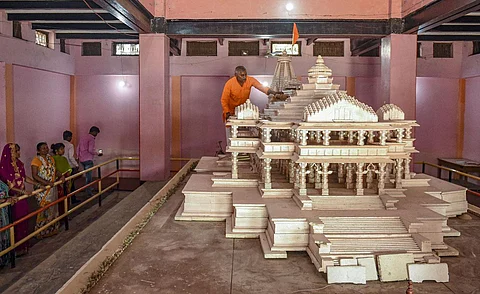

Visuals of millions of lamps lighting up the city of Ayodhya make our hearts swell with emotion. Do we all not celebrate Diwali because it was first celebrated in Ayodhya, many eons ago? The town is now standing at an important juncture in its history.
Traditionally, tourism in India was driven by temple towns like Ayodhya, Kanchi and Kashi, which pilgrims regularly visited following a calendar of fairs and festivals or their own resolve based on the stage of life. Besides religious rituals, people visited sacred places to spend time with learned sages and saints; it was considered time to contemplate in an environment conducive to learning.
Since the liberalisation of the economy, we have seen all kinds of new-age tourism that have worked in the West being experimented in our nation, be it wineries in Maharashtra, casinos in Goa, adventures in mountains or underwater expeditions in the coastal regions. In terms of our habits, we have moved from staying in a hotel only if we did not know anyone in town to staying in one by default, even if we have family and friends in the place. The availability of all kinds of accommodations, from minimal bed-and-breakfast places to high-end luxury resorts, leave us spoilt for choice. Some properties have become a destination in themselves, where you can get yourself pampered in a way that is brag-worthy in your social network—both real and digital. All these have seen reasonable success, but they miss the vital rootedness in Indic travel traditions.
Ayodhya, the city of the Ramayana and many illustrious kings, is at the heart of the Indian ethos. The city is just coming out of the neglect of at least a millennium, with the building of the Sri Ram Mandir. It will by default attract devotees and tourists from around the country as well as the world, much more than what it can accommodate. Now, will the city be ready to handle so many visitors? This is one question everyone has. Ample work is being done to handle it in terms of hard infrastructure. Tourism economies organically learn to handle the business that walks up to them. Innovative solutions will pop up as the demand builds up.
However, the point that everyone seems to be missing is that of soft infrastructure. Ayodhya is our opportunity to define an Indic way of travel. It is our opportunity to develop a city that is rooted in its historic past, that carries forward the aura of its spiritual essence and has the capability to lead the world in terms of a soulful yatra experience.
Ayodhya has at least three walkable parikrama paths, the shortest being within the city and the longer ones being 5 and 14 kos or roughly 15 and 42 kilometres. These can be made into mud walking tracks like Govardhan Parikrama in Braj, with native trees mentioned in the Ramayana and facilities to rest under them. More importantly, halts on these paths can be documented, their stories narrated by the priests or through other mediums. The whole design can keep the pilgrim rooted in the aura of Ayodhya.
Instead of museums meant for the remains of dead societies, we can create spaces where the living traditions can be experienced first-hand. There are ample Ramayana performances from around the world that can be invited to perform here. It can be the place to nurture all forms of arts, at least the 64 that are mentioned repeatedly in our scriptures. Let the visitors learn how to make flower garlands or masks used in all kinds of Ramayana performances or to sing and dance or tell stories, creating an ecosystem that sustains the art and the artists.
Ayodhya is full of tirthas or sacred water bodies, despite the city being located on the banks of the perennial Sarayu river. All of these can be rejuvenated with their annual celebrations performed as prescribed. This might just help us reconnect and respect our water bodies and give another reason for pilgrims to visit the city.
India has always led the world spiritually. Divinity here has attracted pilgrims and travellers since time immemorial. Most of our pilgrimage places are displaced, with their original sacred geography distorted. Ayodhya gives us a unique opportunity to recreate the sacred geography that leverages modern technologies but stays rooted in the Indic philosophy of yatra.
What is the Indic way to travel? Well, it is a deeply conscious travel to widen your horizon, learn, build your endurance and travel as much inwards as outwards. It is an opportunity to engage in serving others for instance through Gau Seva and charity like Anna Dana, to indulge in experiential learning of art and craft, to meet people unlike you from far and wide and exchange knowledge and experiences. It need not be your regular luxury holiday place with an artificial swimming pool. Instead of world cuisine on a platter, let the food from temples delight you the way it does in Puri.
Let Ayodhya define, showcase and lead with an Indic model of tourism.
Anuradha Goyal
Author and founder of IndiTales
(Tweets @anuradhagoyal)